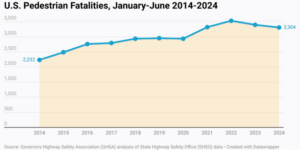A.M. Best is overhauling the calculation of the Best’s Capital Adequacy Ratio used in its assessments of insurer capital strength.
In part 1 of an interview with Carrier Management, Matthew Mosher, executive vice president and chief operating officer for A.M. Best, explained that a new stochastic modeling process for BCAR will mean higher resulting risk charges and correspondingly lower BCAR scores for property/casualty insurers but widespread rating downgrades are not expected.
In part 2 of the interview, Mosher talks more about the stochastically modeled risk factors—which ones are moving the most in the calculation—and how A.M. Best analysts will consider results from insurers’ internal capital models.
Q: During the last webinar update in October, A.M. Best’s analysts said BCAR scores are generally lower for P/C, meaning that are worse—indicating less excess capital. While I understand that analysts will factor in the greater robustness of the model so that the lower scores won’t impact ratings, I know readers are interested in which factors are driving most of the change in the calculated BCAR score results on the P/C side.
Mosher: The largest issue is on the asset side. We’re seeing much more risk coming out on the equity factors…Our initial reaction was, “Is that correct? Is that too high? What’s going on?” But then we look at other models and other studies that have been put out there at the same level of risk metrics, it’s not off. It’s about where people see it…
Looking at it from another perspective, the old equity factor was a 15 percent charge. But then most BCAR scores were upwards of 200 supporting their ratings. They’re all very strong capitalization scores. That would imply that you are holding the equivalent of 30 percent, two times the 15.
That charge now, when you look at the actual volatility in the equity markets, the baseline charge is probably somewhere 35 to 40 percent. There is an increase there for risk in equity portfolios….
On the bonds we’re seeing charges that are a little bit higher because we are taking duration into account now—both for bonds as well as reinsurance recoverables. So, if you’re holding bonds longer, there’s greater credit risk…
For recoverables from reinsurers, we’ll look at the duration of your loss portfolio and the business that you write and apply it. So, if you’re a property writer with a large amount of recoverables, you’re going to get charged less than a casualty writer with the same amount of recoverables and the same reinsurer.
On the underwriting side, the factors relative to the 99 percent confidence interval haven’t changed that much. There are some up, some down. There’s an increase as you move out the tail of course, but when you look at the 99 percentile, it’s not that much different.
Moving the PML charge into the net required capital does have an impact on the score. We had an example in one of the webinars where a company that had $80 million in net required capital, $150 million of surplus, and a net PML of $30 million. In the old calculation, you’d reduce the 150 million by 30 million, divide that by 80 to get a score of 150. In the new calculation, instead of subtracting the 30 million from the 150 million, you add it to the 80 million. That alone would turn it into a score of 136 [150/(30+80)]. We went a step further and even changed that whole calculation. (See Part 1 of this interview for more details on how the structure of the calculation has changed.)
The illustration shows that moving the PML [alone] does change the score. If you were above 100 before, it’s going to lower your score. If you were below 100 before, it will increase your score. It brings the scores closer to the 100 or zero in the new version.
Q: As you’re testing model results, have you done any comparisons to what may be coming out of carriers’ own internal capital models?
Mosher: We haven’t gone through too much with companies, at this point, where their internal capital model might be versus our new model. I’m sure when we release everything there’s going to be a lot of discussion around that. They may even want to get into some of the detail of, “We’re viewing this risk level at the 99 or 99.5 confidence level, and you’re doing it differently.”
What I would say about that is to the extent that capitalization is a major concern, those type of discussions would take place. But to the extent that the capitalization isn’t a driving force in the rating, the analyst probably wouldn’t engage too deeply on that side…
Q: Beyond those discussions, how will carriers’ internal models be considered in the rating process?
Internal capital models [are] an important piece to it, particularly when you move outside of the United States because our models are driven off this US data where we have the greatest amount of data.
Our model is generic. It’s used to run across many different types of companies. Even within the U.S., an internal capital model would be more specific to a company’s risk. So, we’d want to understand the differences of why they’re viewing their risk one way, and our model more generically is viewing it another way.
That would be a driver in terms of how we would, in our ultimate assessment of balance sheet strength, we would move up or down. The BCAR score might say, “It should be viewed as strong.” When we consider what their internal capital model’s saying and consider the issues of why, we may say it’s strongest or weak. Those are different descriptors that we have in the methodology. So, that might change based on our view of their internal capital model.
When you move outside the U.S., because of the data issue, and probably much more precise data, it plays even a bigger importance in understanding how we view a company’s capitalization.
But it also comes into play qualitatively, in terms of risk management and the fact that they have a risk capital model to assess their risk that’s separate. Any time you’re running models, you have to collect data. You have to understand data. It’s a learning process. So, that just says something about the company and the learning process they have about the risks they face.
Q: In advance of the Solvency II effective date this year, there have been a lot of articles about those requirements maybe prompting more M&A. There’s at least one article out there suggesting that the BCAR changes might fuel more purchases of catastrophe reinsurance. Do you expect any strategy changes on the part of insurers or reinsurers, with the BCAR update—either more M&A, more reinsurance buying, other changes?
Mosher: It might have an impact on catastrophe reinsurance or ILS-type of behavior. The way we do our stress tests now is we look at a loss of over 100 years, and then run the BCAR after 100 years to see what you look like after an event. So, it could be that a second event cover is still out there. If your protection starts at 500 years, it’s not going to trigger on the 1-in-100‑year stress test that we have. It’ll still be out there for the second event. So the use of layers and reinstatement clauses may be adjusted to address how we’re measuring that risk. But really I don’t expect a major shift because I think companies are already dealing with their risks in a fairly appropriate manner.
Q: During A.M. Best’s October webinar, there was some discussion about differences in BCAR scores if you had 30 reinsurers or three reinsurers. There has reportedly been a trend in recent years that has seen insurers consolidating their reinsurer panels. Might some of the changes in the BCAR calculations prompt a reversal? In other words, putting programs out to more reinsurers, rather than less?
Mosher: It depends how focused the company is going to be on their BCAR score, which I think would be a mistake, to be overly focused on individual scores. Could you move your BCAR score a couple points? Yes. Should that be a basis for why you’re doing something? No.
I’m not going to tell you [that] some companies might not look at it from that perspective. And they might have a reason to do that. But to move the BCAR score three or four points, I don’t think, is going to play a major role.
You know, these are models. We truly believe that these are models to be used, but still, human judgment has to come into play based on many other things than this one model.
Q: A final question, on types of companies that might be impacted just on the BCAR score calculation. I read at least one article that said small companies are going to see BCAR scores drop dramatically under the updated model. Are there any particular types of insurers—perhaps small companies or monoline insurers—that you envision being most impacted by the BCAR score change?
Mosher: No. This idea that small companies are going to be impacted more than large companies, is not necessarily a true statement. The impacts are based on who has risk.
If I were going to say companies that will be impacted, just looking across the five scores themselves, it is those companies that have bought reinsurance right above the 1-in-100‑year protection level. They’ll jump out [because] their BCAR score will drop dramatically when that reinsurance runs out.
At the one-in-100‑year level, because they already have their protection up to there, there’s not one type of company that’s going to move that much more than another company….
You could say if somebody’s got a heavy equity portfolio, because of the investment charges, those types of companies may move. But for the most part, those companies that have the equity portfolios are very well‑capitalized already. And that’s why they have an equity portfolio….
Q: Final thoughts?
Mosher: As people see it, I think they’ll feel comfortable with the fact that it’s a better tool, but it’s not something that’s going to change dramatically in terms of how we view companies.
It’s going to help us differentiate different risks. One company to the next, the impact might be different, but I don’t expect the wholesale, this group of companies is going to be lower, that group’s going to be higher or anything like that.
Related Videos:
- BCAR Revisited: Why A.M. Best Is Updating Its Capital Ratio
- Widespread Rating Changes Not Expected When A.M. Best Rolls Out New BCAR
Related articles:





















 A Shifting Political Landscape—and More State Regulations for Cyber
A Shifting Political Landscape—and More State Regulations for Cyber  The Future of Premium Audits: Using AI Assistants to Streamline Data Collection
The Future of Premium Audits: Using AI Assistants to Streamline Data Collection  The Workplace Is Changing; So Are the Risks for Employment Discrimination Claims
The Workplace Is Changing; So Are the Risks for Employment Discrimination Claims  HOA Secures $2.5M ‘Wildfire Resilience Insurance’: WTW
HOA Secures $2.5M ‘Wildfire Resilience Insurance’: WTW 

